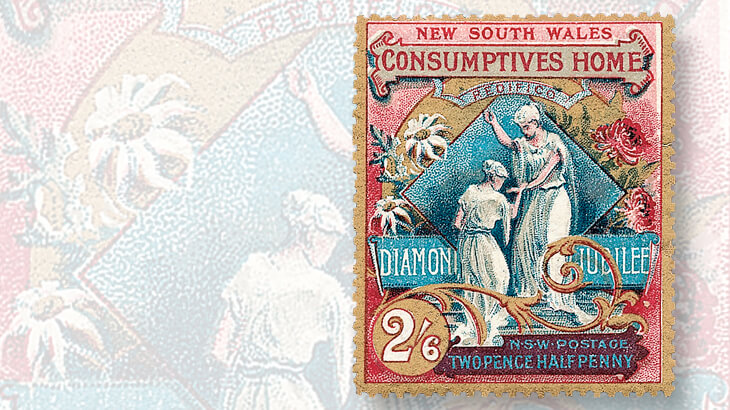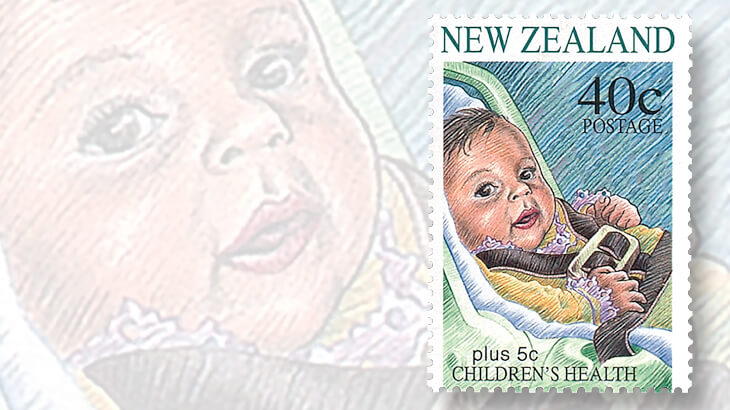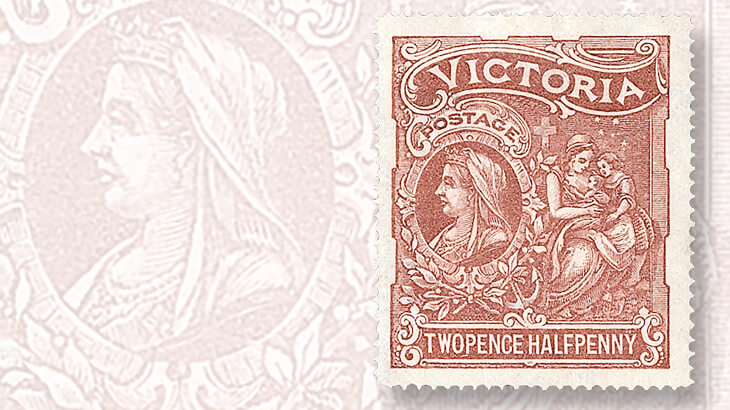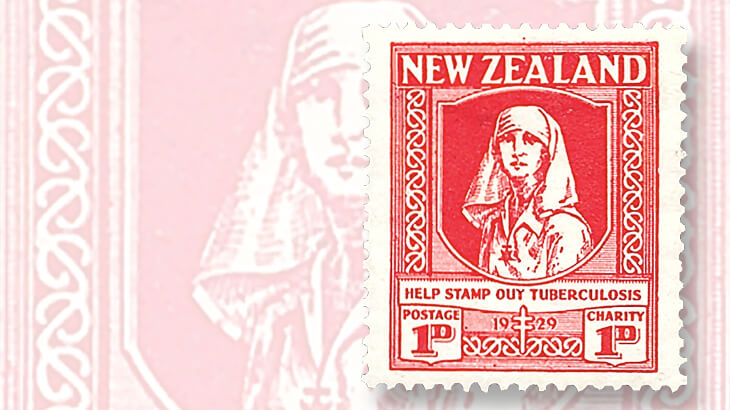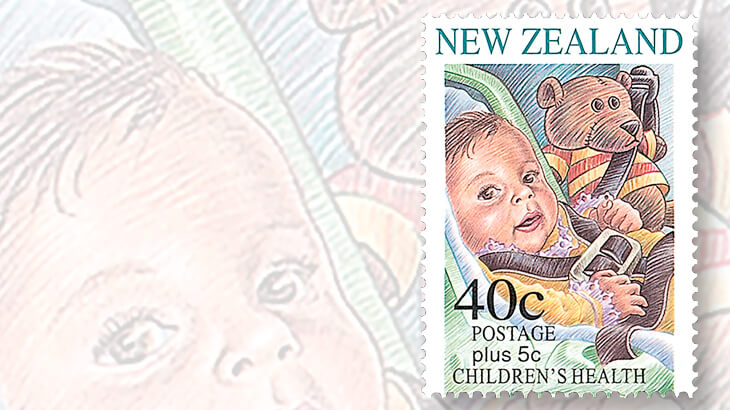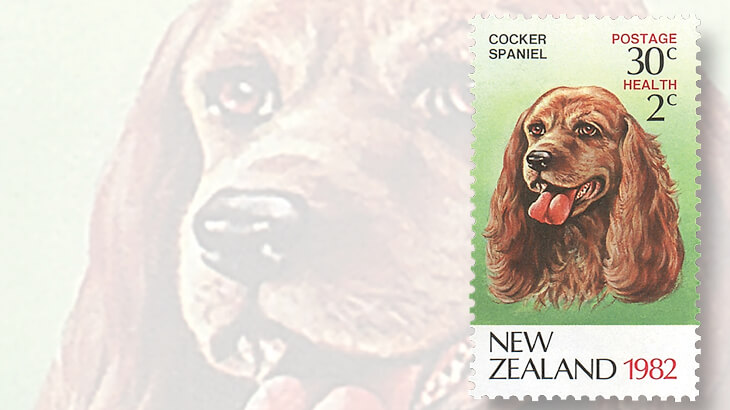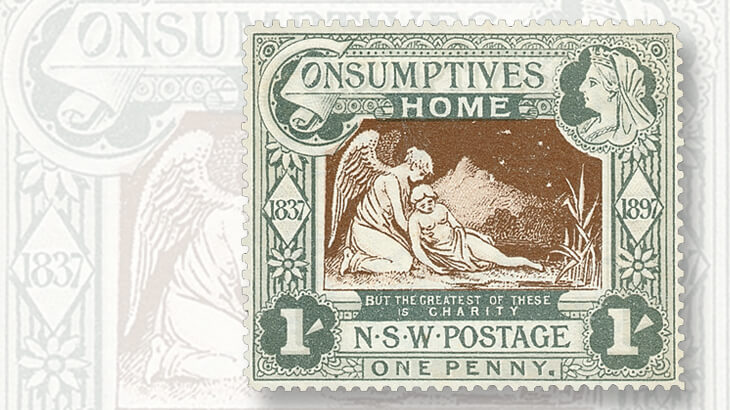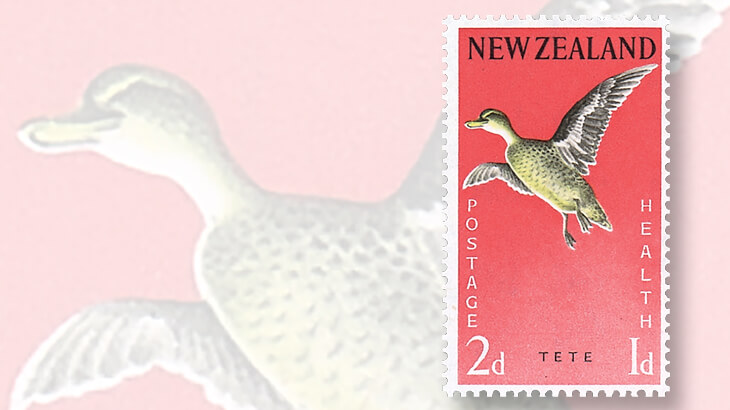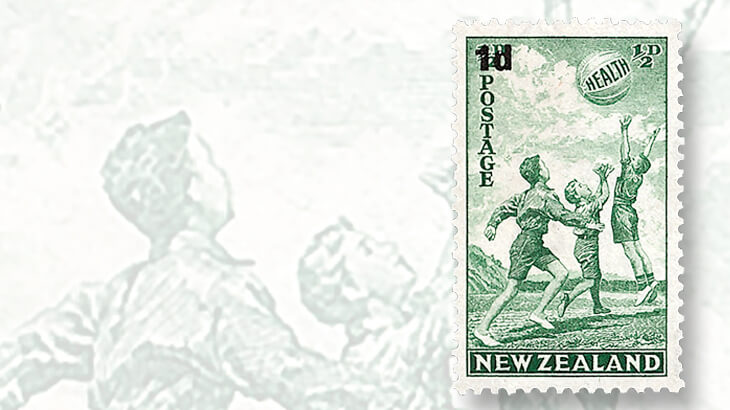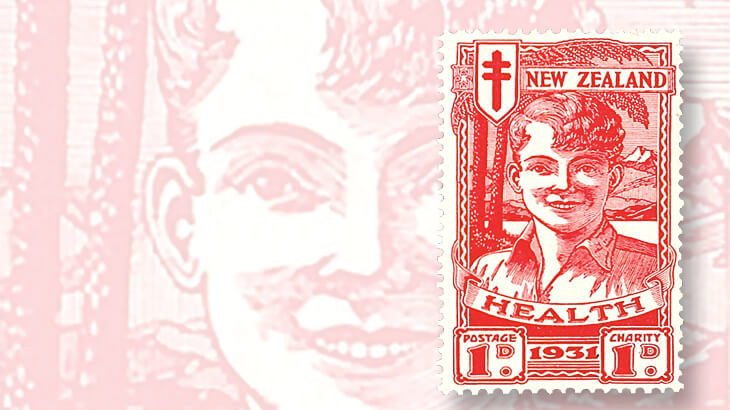World Stamps
Tradition of semipostal stamps Down Under continues to present day: Stamps Down Under
By Janet Klug
It seems like more nations worldwide are issuing semipostal stamps.
Semipostals are postage stamps that carry mail, but in addition to fulfilling the necessary postage rate, the stamp also has an added fee (called a surtax) to raise money for charitable purposes or other reasons.
Mailers pay a little extra for the stamp, knowing that money collected will benefit a cause.
Connect with Linn’s Stamp News:
Sign up for our newsletter
Like us on Facebook
Follow us on Twitter
The first semipostal stamps were issued in New South Wales and Victoria. At the time, both were British colonies in Australia. New South Wales had two good reasons to issue its semipostals in 1897: a special royal occasion and a worthwhile charity.
The first illustration here shows the 1-shilling New South Wales semipostal (Scott B1). The upper-right corner has an image of Queen Victoria, and the border along the left of the stamp contains a diamond shape reading “1837,” and the right-hand border has a similar diamond with “1897.”
This stamp commemorates Queen Victoria’s diamond jubilee (60th anniversary) as monarch. The remainder of the stamp features a vignette (decorative element in the center of the stamp) of an angelic figure caring for someone. That part of the stamp design is a reference to the semipostal aspect.
The 1sh denomination appears in a circular value tablet in the bottom-left corner, and just below the “N.S.W. Postage” banner is another banner with the words “One Penny.”
Are you confused? The penny was the amount that went to pay postage, and the shilling (equivalent to 12 pence) was the amount it cost to purchase the stamp. For every stamp sold, 1d went to the post office and 11d went to the consumptives’ homes.
New South Wales issued a second semipostal stamp in 1897 that was both a commemorative postage stamp honoring the queen and a fundraiser for a facility for consumptives (tuberculosis patients). The stamp was printed in three colors, which gave it more pizazz. The allegorical image is that of Charity, and Victoria’s jubilee is noted in a banner behind the figures of Charity and its recipient.
The stamp was sold at post offices for the amount in the denomination circle at bottom left on the stamp: 2/6, or 2sh 6d, which equals 30d. A banner below the vignette states the postage as “twopence halfpenny,” or 2½d.
If you subtract 2½d from the 2sh 6d, you discover the charity received 2sh 3½d for each stamp that was sold.
The colony of Victoria also issued two semipostals to honor Queen Victoria’s jubilee and to provide money for a hospital fund. The same denominations of the New South Wales semipostals were used on the Victoria stamps.
While both of the colony’s stamps have postal denominations, there is no total cost (postage plus semipostal surtax) indicated on the stamps; however, the amounts are the same as those of the New South Wales issues.
The 1d Victoria stamp (Scott B1) was sold for 1sh, yielding 11sh for charity. The 2½d stamp (B2) was sold for 2sh 6d per stamp, making the charitable donation of 2sh 3½d for each stamp sold.
Both of the Victoria semipostals were designed by Maximilian Tannenberg, and the engraving was done by R. Mitchelhill.
All four of the world’s first semipostal stamps were beautifully done. It was a great way to start a new idea.
Within the “Down Under” realm, New Zealand has been the most prolific issuer of semipostal stamps. The first New Zealand semipostal (Scott B1) was issued in 1929 to raise funds to eliminate tuberculosis, with 1d for postage and 1d for charity. The stamp shows an image of a nurse, and the same image was used again for the country’s 1930s semipostal (B2) to “help promote health.” This stamp likewise provided 1d for postage and 1d for charity.
One of the best-known New Zealand semipostals was issued in 1931. That was the first year that two semipostal stamps were issued by New Zealand, again to raise funds to promote health.
The scarlet stamp (Scott B3) sold for 1d for postage plus 1d for charity. There also was a 2d(+1d) stamp in dark blue (B4). The same happy boy was depicted on the two stamps, leading to the nickname “Smiling Boy” for the design.
In 1939, two New Zealand semipostals of different denominations showed three boys playing with a beach ball. The first issue was green and was denominated ½d for postage and the same amount for charity. The scarlet stamp was printed with a denomination of 1d for postage and the same for charity.
But a problem occurred. These two stamps were printed and supposed to be issued on Oct. 2, 1939, but there was a postal rate increase, so the stamps were surcharged by the Government Printer in Wellington on Oct. 16.
The green stamp received a surcharge of 1d atop the ½d denomination (Scott B14), while the scarlet stamp was surcharged 2d on the 1d denomination (B15).
The following year, the same beach-ball design was used on two semipostal stamps issued without surcharges but with updated postage rates of 1d for the green stamp (Scott B16) and 2d for the orange brown one (B17). Beach-ball design stamps were issued yet a third time, in 1941. Those two stamps (B18-B19) had the same denominations as the 1940 stamps, but this time the stamps were overprinted “1941” in black.
Stamps that raised money for health continued to feature beautifully healthy children, including triangular stamps in 1943 bearing portraits of Great Britain’s Princess Margaret Rose (Scott B22) and Princess Elizabeth (B23), respectively.
Most of the New Zealand semipostals are called “health stamps” because the added charity fee has gone to support the country’s health camps for children.
These camps were founded in 1919 for “at-risk” children who were malnourished or exposed to tuberculosis or other diseases. The camps teach children good habits, exercise and healthy diets.
Non-health New Zealand semipostal stamps have been issued occasionally. In 1936, two semipostal stamps were released to commemorate the 21st anniversary of the first New Zealand troops who went to war, along with Australian forces, in the Gallipoli campaign of World War I. The combined armies were called the Anzac (Australian and New Zealand Army Corps) forces.
The two issues looked much like health stamps. The green stamp (Scott B9) provided ½d postage and ½d for NZRSA, the New Zealand Returned Services Association. The red Anzac stamp had the same image as the green, but with 1d for postage and 1d to support NZRSA.
The image is of a New Zealand soldier in uniform, with Anzac Cove, where the combined forces landed on the Gallipoli peninsula in April 1915, in the background.
In 1953, New Zealand added minisheets to the two semipostal stamps issued annually. In the late 1950s, New Zealand began adding design subjects other than children to their health stamps program of semipostals. In 1959, two Bird semipostal stamps featured a gray teal (Scott B57) and a pied stilt (B58), which provided 2d for postage and 1d for health camps.
By the 1980s, New Zealand had converted to decimal currency, and as in many other nations, postage rates began to accelerate. The health stamps issued in 1982 featured dogs, and the following year it was cats’ turn to help raise money for health camps.
In 1996, a New Zealand semipostal stamp (Scott B154) showed an adorable baby in a car seat, sitting next to a teddy bear buckled into a shoulder-strap seat belt.
Unfortunately, this cute stamp created a philatelic catastrophe. The strapped-in teddy bear’s safety belt indicated the teddy was facing forward and therefore so was the baby. In most countries, laws require that babies in car seats face backwards for maximum protection.
The stamps with the baby in the car seat were redesigned and issued without the teddy bear (Scott B151) to eliminate the forward-facing perspective.
The bear stamps were supposed to have been destroyed, but some reached the marketplace.
There were varieties, too: Some were self-adhesive, others were water-activated, and there also were souvenir sheets.
The withdrawn stamps showing the baby with the teddy bear are difficult to find and expensive to buy, and I’m perfectly happy to have the very affordable redesigned baby-alone-in-the-car-seat semipostal in my album.
In New Zealand and elsewhere, postage rates continue to rise. On Sept. 2, 2015, New Zealand issued four health stamps that promote “being SunSmart.” Each of the stamps has a theme of self-protection from too much sun, with various denominations, using the most common postage rates of 80¢ for standard letter postage (in two different designs), $1.40 for Fastpost letter next-day delivery, and $2 for Fastpost large letter; plus a 10¢ surtax per stamp to support Stand Children’s Services Tu Maia Whanau (formerly known as Children’s Health Camps).
With the exception of a certain buckled-in teddy bear, most of the New Zealand semipostals fall within the realm of a modest stamp budget.
The stamps are attractive and fun to collect. Give them a try!
More about stamps from Down Under:
Stamps document going for the gold in Australia in the 1850s: Stamps Down Under
Stamps document the complex political evolution of New Guinea: Stamps Down Under
Australia’s marsupial definitives are uncommonly fun and interesting
MORE RELATED ARTICLES
Headlines
-
US Stamps
Oct 7, 2024, 3 PMMcMurtrie dismissed as APS education director following Sept. 21 arrest
-
US Stamps
Oct 7, 2024, 12 PMVasiliauskas named president of Mystic Stamp Co.
-
US Stamps
Oct 6, 2024, 5 PMApgar souvenir card available
-
US Stamps
Oct 6, 2024, 4 PMFirst Continental Congress and U.N. stamps receive Scott catalog numbers
